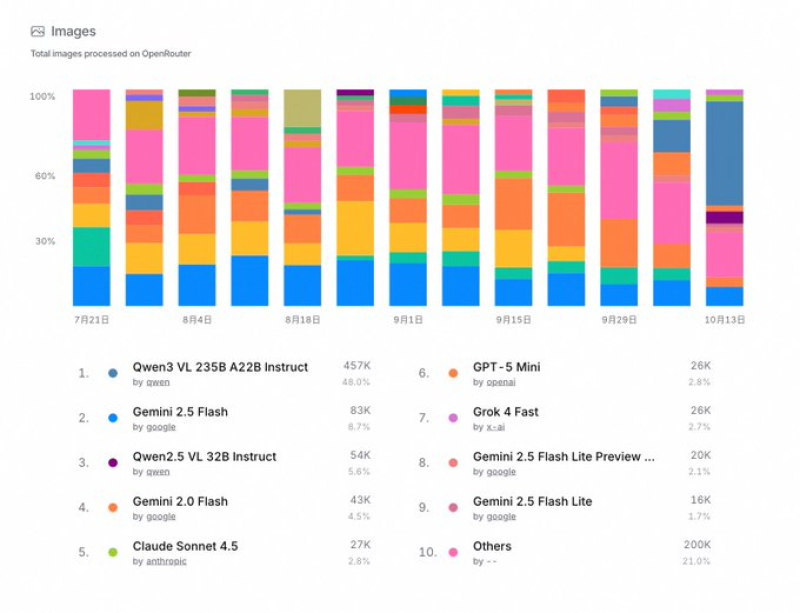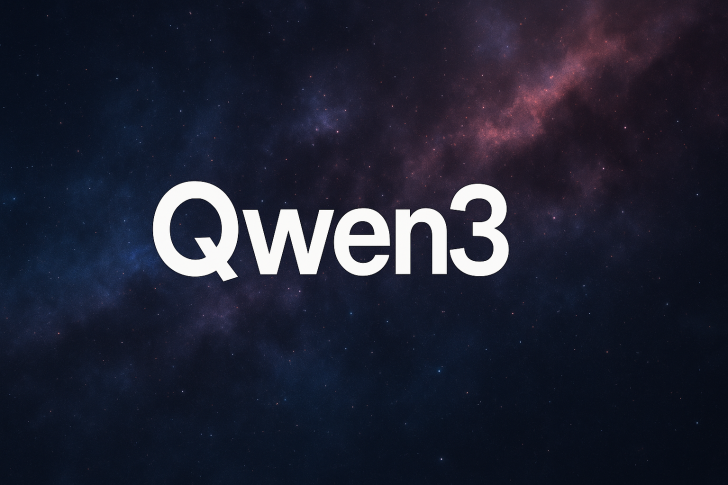The AI world has a new frontrunner in vision processing. OpenRouter's recent data shows Qwen3-VL-235B-A22B-Instruct commanding 48% market share, a decisive lead that positions Alibaba's Qwen as a serious contender against established players like Google's Gemini and OpenAI's GPT models.
The Numbers Tell the Story
Qwen3 VL processed 457,000 images on OpenRouter, dwarfing its nearest competitors. Google's Gemini 2.5 Flash trails significantly at 83,000 images (8.7%), while Gemini 2.5 VL sits at 54,000 (5.6%). Anthropic's Claude Sonnet 4.5 and OpenAI's GPT-5 Mini each handle around 27,000-28,000 images, representing only small slices of total activity.
Alibaba's Qwen account acknowledged the achievement in a recent tweet, crediting the global developer community for driving adoption.

What's Behind Qwen's Rise
Three factors explain the surge. First, open-source accessibility makes Qwen easier to integrate compared to closed systems. Second, the model's visual-language instruction tuning delivers strong performance for multimodal tasks. Third, Alibaba's strategy of nurturing developer adoption has translated into real-world usage at scale.
From July through October, Qwen steadily climbed to capture nearly half the market. Google's Gemini models remain competitive but haven't matched this momentum. OpenAI's GPT-5 Mini and xAI's Grok 4 Fast hover around 2-3% adoption each, while a diverse "Others" category still accounts for over 20%, showing continued experimentation with alternative models.
What This Means
This isn't just a leaderboard update. It shows that open-source AI can achieve mass adoption that rivals proprietary systems. While Google and OpenAI maintain strong brand recognition and research leadership, Qwen demonstrates that accessibility and community focus can drive real market share. This could reshape enterprise decisions, developer tool choices, and the geographic distribution of AI influence.
 Marina Lyubimova
Marina Lyubimova

 Marina Lyubimova
Marina Lyubimova


